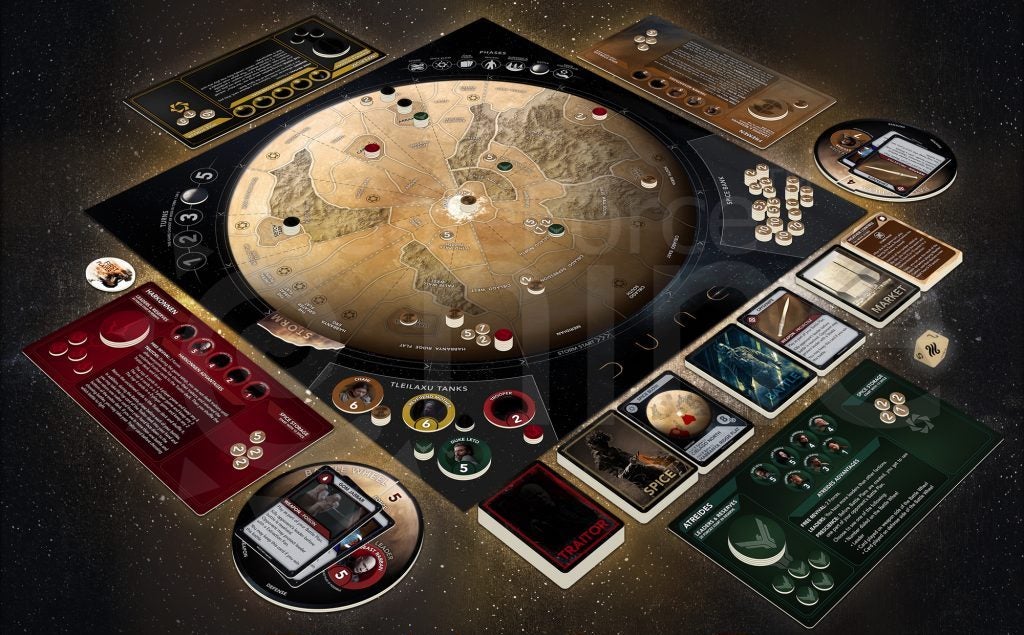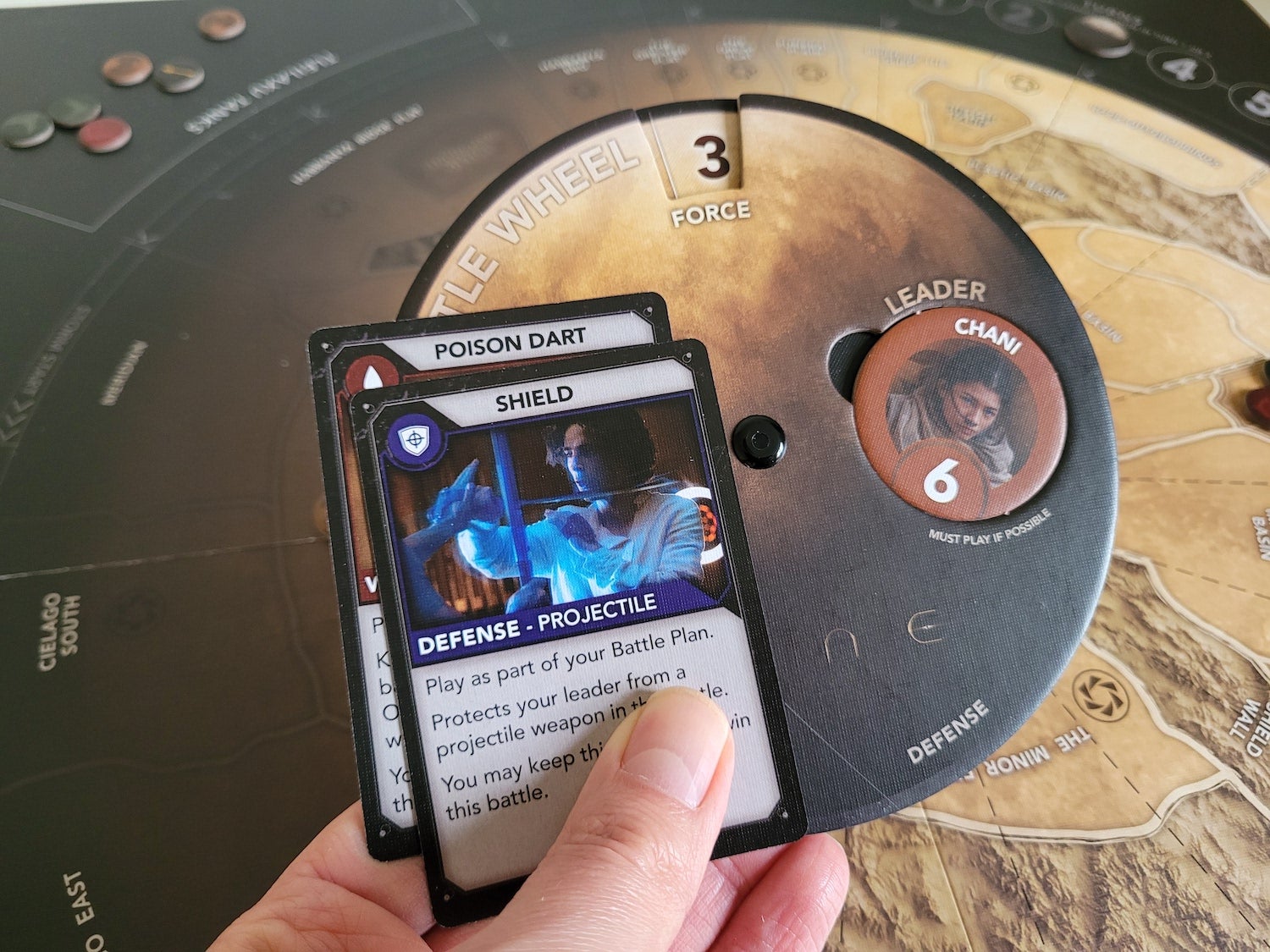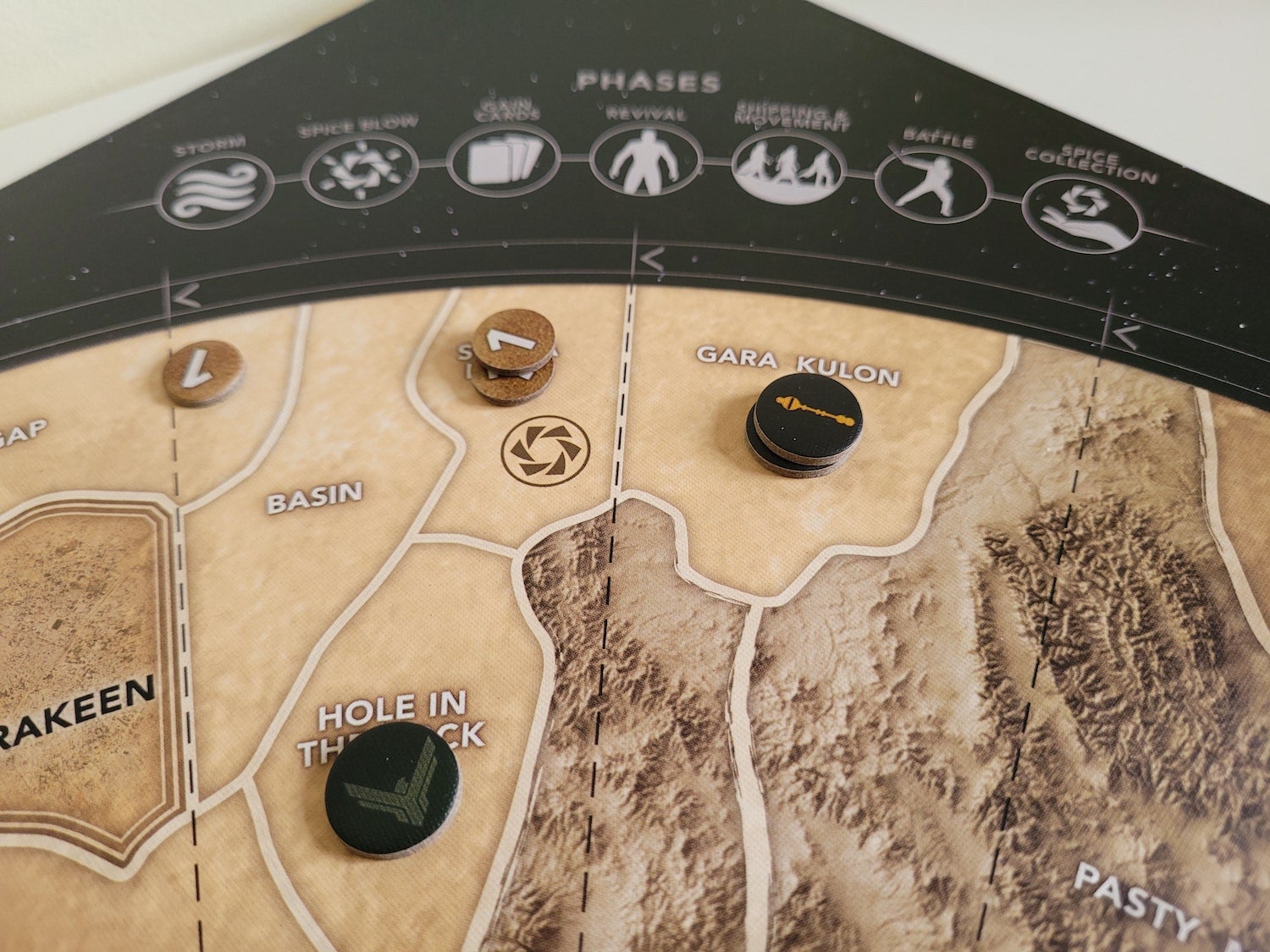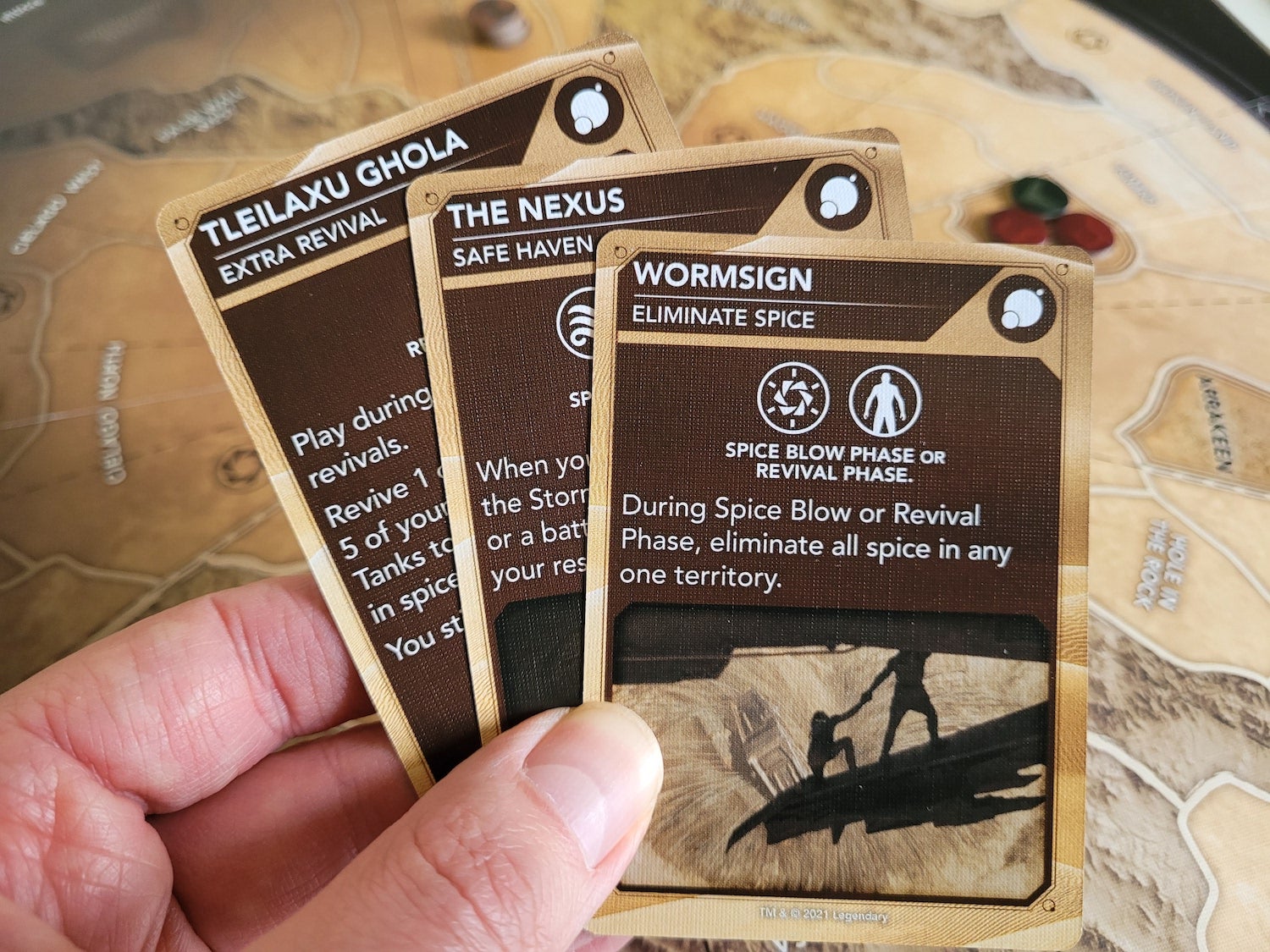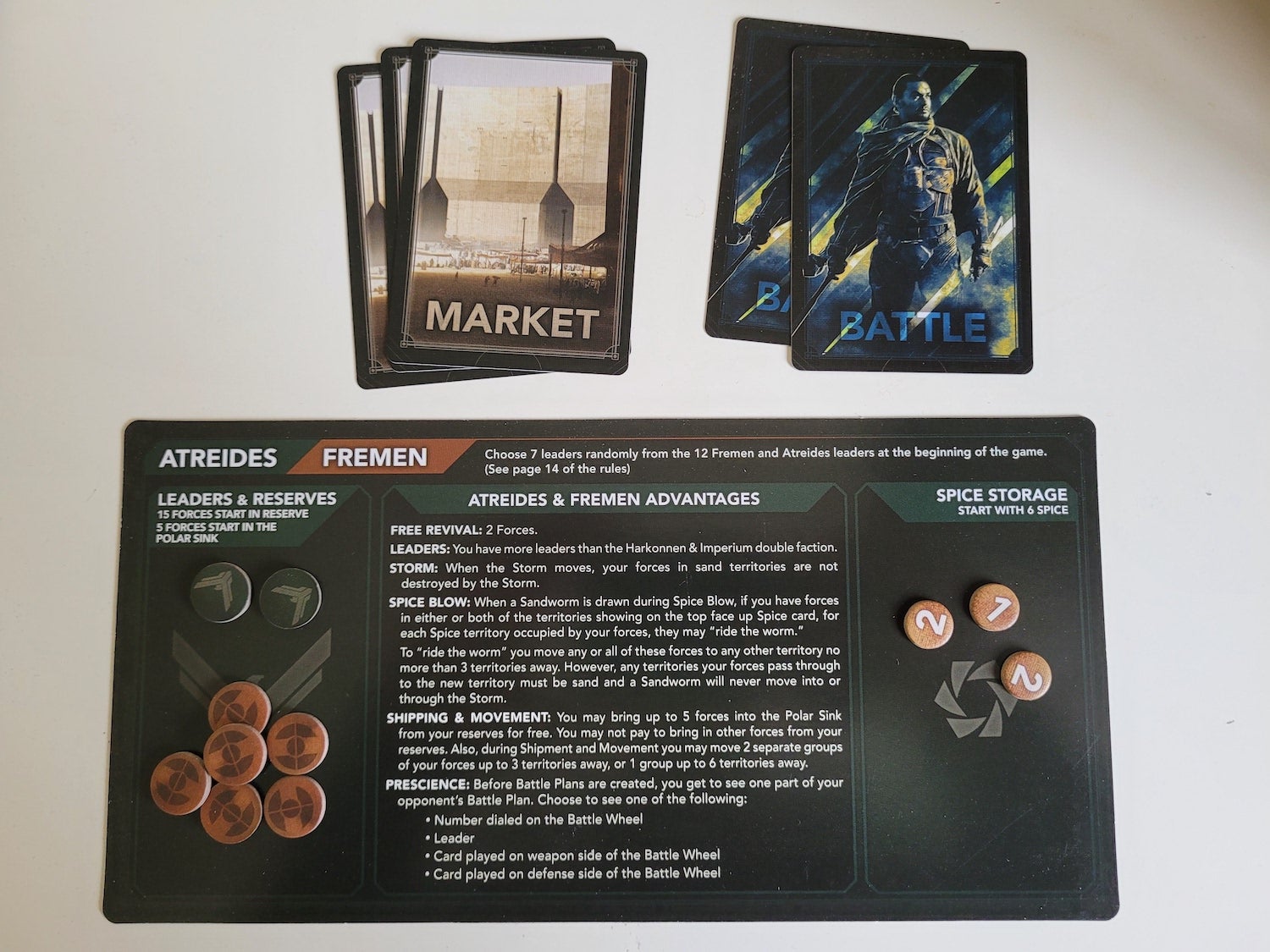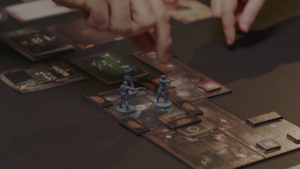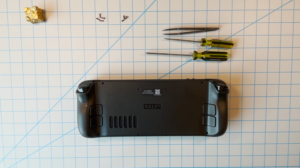With the advent of the 2021 Dune movie, this famous sci-fi franchise is now well served with game adaptations, such as the excellent Dune: Imperium. But it wasn’t always this way. For a long time, there was only one Dune game — also called Dune — that was first released in 1979 but which has cast a long and impressive shadow over gaming ever since. Years ahead of its time, it was a brilliant evocation of the source material with one of the most nail-biting combat mechanisms ever invented.
However, it also needed a full complement of six players for full effect and had a play time that could last anywhere from an hour to most of the day. Trying to make the core of the game more flexible for modern tastes has long been seen as an almost impossible design goal. But that hasn’t stopped publisher Gale Force Nine from trying, with the clumsily titles Dune: A Game of Conquest and Diplomacy (see it at Amazon).
What’s in the Box
If you’ve played an edition of the original Dune game this is based on, the components will look very familiar. There’s a board depicting the surface of the planet as a circular map, which is functionally identical to its predecessor. The art is perhaps clearer, although less stylized than previous editions.
Three sheets of card punchboard hold a mass of spice tokens, leader disks, the infamous battle wheels and some other tokens. The face images on the leaders are taken from the movie adaptation. The battle wheels are large and must be pinned together, front to back, with the two halves sliding loosely against each other.
At the bottom are four decks of cards to track traitors, the spice blow, battle artifacts and the market of tricks and tools. These are also well illustrated with a mixture of custom art and that based on images from the film. However, they’re so thin that they barely qualify for the word “card” above thick paper. Sturdy card sleeves will be required if you don’t want them disintegrating.
Rules and How it Play
Dune: A Game of Conquest and Diplomacy lives up to the first half of its name. Winning means controlling three out of the five strongholds on the planet’s surface with your troops at the end of a turn. If no one has managed that after five turns, you add up points. Five for each stronghold you control plus the amount of spice, used in this game as a currency, to see who emerges as the victor.
This tight turn limit gives the game a much more reliable and manageable time table than the older version of the game, and it generally plays in around an hour unless someone takes an early win. But it also obviates the second part of its long name, and a key component of the previous game: negotiation. With so few turns and no rules to allow allied victories, it’s every player for themselves. It’s an unfortunate loss but a necessary one to keep a lid on the play time.
What’s been retained, though, is the battle wheel, the merciless engine by which you win territories. It’s such a great idea that it’s astonishing it hasn’t been copied more frequently. In a fight, each player secretly selects a weapon and perhaps some weapon or defense cards from their reserves. Then, still in secret, they dial a number of the wheel which cannot exceed the troops they have in the fight. The plans are then revealed and all the values added up: the loser loses all their forces, while the winner loses only the number of troops they dialed.
It’s hard to overstate how excruciating these decisions are. Dialing one short can lead to a catastrophic loss, whereas dialing one too many can leave you unable to defend your newly-won territory. As if this wasn’t enough tension, you may find your opponent has already turned your leader into a traitor, or that a poor choice of weapon or defense cards means they die in the fight so you don’t get their battle value or the chance to lose them again.
With such huge stakes, the decisions can feel paralyzing. And this is where Dune: A Game of Conquest and Diplomacy diverges hugely from its predecessor both for good and ill. On the plus side the shorter game time makes it easier to choose and easier to bear if you screw things up. On the minus side, cards and traitors are largely a crapshoot in this edition, whereas in the older game there were glimmers of intelligence to be gained as the game unfolded, allowed more informed choices.
Aside from controlling strongholds, the other vital element is control of spice. This appears at random on the board according to card draw and is an immediate lure to set up further armed clashes. You need spice to buy cards and to ship troops from your reserves onto the planet’s surface, from where they are able to move short distances across the desert. But beware as a raging sandstorm moves at the whim of the dice around the circular board like the hand of a clock, destroying forces left out in the open for an added dose of strategic disquiet.
Another key thing that’s been retained is the game’s asymmetry. There are four factions here rather than six, the Bene Gesserit having been folded in to the Emperor and the Guild being purged completely. But each still offers a sense of playing in the paper shoes of that faction from the book. The Atredies can use Paul’s prescience to force an opponent to reveal part of their battle plan. The Harkonnen get extra traitors. The Imperium gets the spice when other players buy cards. Finally, the Fremen can move around the hostile surface of the planet freely and easily.
These matchups slot into their narrative roles well, however many players you have, creating a believable retelling of the novel’s story. With two players, there are also rules for each player to control paired factions, pitting the Emperor and Harkonnen versus the Atredies and the Fremen. It’s not an ideal way to learn the game, giving each player extra overhead to deal with, but it is a very satisfying way to experience Dune with two.
Where to Buy
- 2021
- across
- All
- around
- Art
- Battle
- board
- buy
- Cards
- component
- components
- could
- Creating
- Currency
- day
- deal
- Defense
- Design
- Dune
- Early
- engine
- experience
- Face
- Film
- Finally
- First
- Franchise
- full
- game
- Gaming
- Giving
- good
- great
- Grid
- having
- here
- hold
- How
- HTTPS
- huge
- idea
- Intelligence
- IT
- Key
- large
- lead
- LEARN
- Long
- map
- Market
- May
- Modern
- more
- move
- movie
- Offers
- open
- original
- Other
- Paper
- planet
- play
- player
- players
- Playing
- Plus
- poor
- released
- Revealed
- review
- rules
- sale
- sense
- set
- Shadow
- Short
- SIX
- slot
- So
- Story
- Strategic
- Surface
- The
- the dice
- The Source
- time
- together
- Tokens
- tools
- track
- value
- version
- Versus
- Wheel
- WHO
- win
- winning
- years
